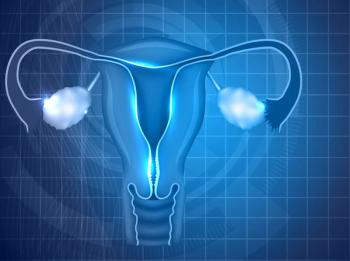
RAD51 Genes Linked to Increased Ovarian Cancer Risk
A study has found that mutations in the genes RAD51C and RAD51D confer risk for epithelial ovarian cancer, causing approximately one in every 90 high-grade and one in every 120 epithelial ovarian cancer occurrences.
A study has found that mutations in the RAD51C and RAD51D genes confer risk for epithelial ovarian cancer, causing approximately one in every 90 high-grade and one in every 120 epithelial ovarian cancer occurrences.
RAD51C and RAD51D were recently identified as susceptibility genes for ovarian cancer. The study,
Gayther and colleagues sequenced and analyzed germline DNA from a group of 3,429 patients with invasive epithelial ovarian cancer, 2,772 control patients, and 2,000 unaffected women who were BRCA1/BRCA2 negative from the United Kingdom Familial Ovarian Cancer Screening Study.
“Overall, 0.81% of epithelial ovarian cancer cases had a mutation in one of these three genes compared with 0.11% in controls,” the researchers wrote.
RAD51B mutations only had two occurrences in the case-control study (0.06%); however, mutations in RAD51C (14 occurrences, 0.41%) and in RAD51D (12 occurrences, 0.35%) were more frequent. RAD51C mutations were found to increase the odds for all ovarian cancer subtypes 5-fold (95% confidence interval [CI], 1.1–24; P = .035) and mutations in RAD51D 12-fold (95% CI, 1.5–90; P = .019).
“Gene-specific odds ratios for the serous subtype were 7.4 for RAD51C (95% CI, 1.6–35; P < .011) and 12 for RAD51D (95% CI, 1.5–97; P < .021),” the researchers wrote.
The rate of RAD51 mutations among the unaffected United Kingdom Familial Ovarian Cancer Screening Study participants was 0.65%, a rate significantly greater than that of the control patients (P < .001). In addition, those patients who were mutations carriers were significantly more likely to have a family history of ovarian cancer among first- or second-degree relatives (P < .001), the study showed.
“In addition to the benefit of mutation testing of RAD51C and RAD51D for disease prevention, mutation carriers also may be responsive to treatment with poly(ADP-ribose) polymerase inhibitors, which results in synthetic lethality of cells that have mutant homologous recombination or double-strand DNA break repair,” the researchers wrote. “This treatment might improve progression-free survival among these patients.”
They added that if clinical testing for these two genes were approved, women who carried these genes, and their relatives, could undergo risk-reducing salpingo-oophorectomy.
Newsletter
Stay up to date on recent advances in the multidisciplinary approach to cancer.

















































































